 W
WThe Boxer Rebellion, Boxer Uprising or Yihetuan Movement, was an armed insurrection in China between 1899 and 1901, towards the end of the Qing dynasty. It was initiated against the increasing foreign intervention including Christian missionary work in the country, by the Militia United in Righteousness (Yìhéquán), known in English as the Boxers because many of their members had practised Chinese martial arts, also referred to in the Western world at the time as Chinese Boxing.
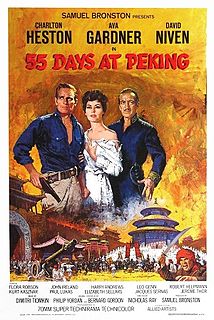 W
W55 Days at Peking is a 1963 American epic historical war film dramatizing the siege of the foreign legations' compounds in Peking during the Boxer Rebellion, which took place in China from 1899 to 1901. It was produced by Samuel Bronston for Allied Artists, with a screenplay by Philip Yordan and Bernard Gordon with uncredited contributions from Robert Hamer, Julian Halevy, and Ben Barzman. Noel Gerson wrote a screenplay novelization, under the pseudonym Samuel Edwards, in 1963.
 W
WThe 1900 Amur anti-Chinese Pogroms were a series of killings and reprisals of Chinese residents of Blagoveshchensk and in the Sixty-Four Villages East of the River in the Amur region during the same time as the spread of the Boxer Rebellion throughout China by Russian authorities, ultimately resulting in thousands of deaths, the loss of residency for Chinese living in the Sixty-Four Villages East of the River, and increased Russian control over the region. The Russian justification for the pogroms were attacks made on Russian infrastructure outside Blagoveshchensk by Chinese Boxers, which was then responded to by Russian force. The pogroms themselves occurred between 4–8 July, 1900.
 W
WAigun was a historic Chinese town in northern Manchuria, situated on the right bank of the Amur River, some 30 kilometres (19 mi) south (downstream) from the central urban area of Heihe.
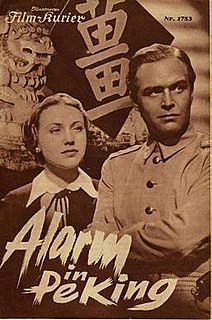 W
WAlarm in Peking is a 1937 German adventure film directed by Herbert Selpin and starring Gustav Fröhlich, Leny Marenbach, and Peter Voß. It is set against the backdrop of the 1900 Boxer Rebellion in China. German filmmakers had frequently used China as a setting since the 1910s, but from 1931 onwards they made a series of films with political overtones.
 W
WAttack on a China Mission is a 1900 British short silent drama film, directed by James Williamson, showing some sailors coming to the rescue of the wife of a missionary killed by Boxers. The four-shot film, according to Michael Brooke of BFI Screenonline, was innovative in content and technique. It incorporated a reverse-angle cut and at least two dozen performers, whereas most dramatic films of the era consisted of single-figure casts and very few shots. Film historian John Barnes claims Attack on a China Mission had "the most fully developed narrative" of any English film up to that time."
 W
WThe Beijing Legation Quarter was the area in Beijing, China where a number of foreign legations were located between 1861 and 1959. In the Chinese language, the area is known as Dong Jiaomin Xiang, which is the name of the hutong through the area. It is located in the Dongcheng District, immediately to the east of Tiananmen Square. The city of Beijing was commonly called Peking by Europeans and Americans until the 1970s.
 W
WThe Boxer Indemnity Scholarship Program was a scholarship program for Chinese students to be educated in the United States, funded by the Boxer Indemnity. In 1908, the U.S Congress passed a bill to return to China the excess of Boxer Indemnity, amounting to over 17 million dollars. Despite the fierce controversies over returning the excess payment, President Theodore Roosevelt's administration decided to establish the Boxer Indemnity Scholarship Program to educate Chinese. President Roosevelt recognized this program as a chance for "American-directed reform in China" that could potentially improve US-China relations, bridging Chinese and American culture, and promoting the US's international image. Instead of copying European imperialism and using military means to reap a short-term financial gain, Roosevelt established the program to insure peace and trade in China in the "most satisfactory and subtle of all ways", while helping the United States gain respect and take a leadership position in the world.
 W
WThe Boxer Protocol was signed on September 7, 1901, between the Qing Empire of China and the Eight-Nation Alliance that had provided military forces, after China's defeat in the intervention to put down the Boxer Rebellion. It is often regarded as one of the Unequal Treaties.
 W
WBoxers and Saints are two companion graphic novel volumes written and illustrated by Gene Luen Yang, and colored by Lark Pien. The publisher First Second Books released them on September 10, 2013. Together the two volumes have around 500 pages.
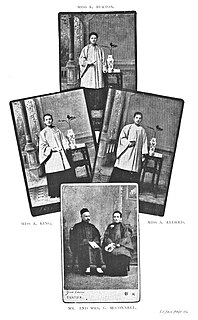 W
WThe "China Martyrs of 1900" is a term used by some Protestant Christians to refer to American and European missionaries and converts who were murdered during the Boxer Rebellion, when Boxers carried out violent attacks targeting Christians and foreigners in northern China.
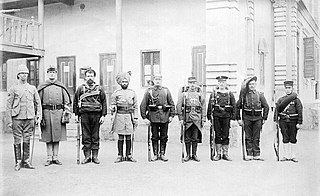 W
WThe China Relief Expedition was an expedition in China undertaken by the United States Armed Forces to rescue United States citizens, European nationals, and other foreign nationals during the latter years of the Boxer Rebellion, which lasted from 1898 to 1901. The China Relief Expedition was part of a multi-national military effort known as the Eight-Nation Alliance to which the United States contributed troops between 1900 and 1901. Towards the close of the expedition, the focus shifted from rescuing non-combatants to suppressing the rebellion. By 1902, at least in the city of Peking, the Boxer Rebellion had been effectively controlled.
 W
WThe Eight-Nation Alliance was a multinational military coalition that invaded northern China in 1900 with the stated aim of relieving the foreign legations in Beijing, then besieged by the popular Boxer militia, who had determined to expunge foreign influence from China. The Allied forces consisted of approximately 45,000 troops from the eight nations of Germany, Japan, Russia, Britain, France, the United States, Italy, and Austria-Hungary. Neither the Chinese nor the foreign allies issued a formal declaration of war. No treaty or formal agreement bound the Alliance together. Some western historians define the first phase of hostilities, starting in August 1900, as "more or less a civil war", though the Battle of the Taku Forts in June pushed the Qing government to support the Boxers. With the success of the invasion, the later stages developed into a punitive expedition, which pillaged Beijing and North China for more than a year. The fighting ended with the signing of the Boxer Protocol.
 W
WCao Futian was a Chinese nationalist and leader of the Boxers during the Boxer Uprising.
 W
WThe Great Wall of China hoax was a faked newspaper story concocted on June 25, 1899 by four reporters in Denver, Colorado about bids by American businesses on a contract to demolish the Great Wall of China and construct a road in its place. The story was reprinted by a number of newspapers.
 W
WGuizi is a pejorative Chinese slang term for foreigners, and has had a history of containing xenophobic connotations.
 W
WHanyang Arsenal was one of the largest and oldest modern arsenals in Chinese history.
 W
WBaron Adolphe Marie Maurice Joostens, was a Belgian diplomat. As a signatory of the Boxer Protocol, the final act at the Algeciras Conference and the Colonial Charter in which Congo Free State was ceded to Belgium, Joostens was an important Belgian diplomat in the age of New Imperialism. Throughout his career, Joostens was able to gain the absolute confidence of king Leopold II of Belgium and eventually he became one of the monarch's favourite diplomats.
 W
WSMS Kurfürst Friedrich Wilhelm was one of the first ocean-going battleships of the German Kaiserliche Marine. The ship was named for Prince-elector (Kurfürst) Friedrich Wilhelm, 17th-century Duke of Prussia and Margrave of Brandenburg. She was the fourth pre-dreadnought of the Brandenburg class, along with her sister ships Brandenburg, Weissenburg, and Wörth. She was laid down in 1890 in the Imperial Dockyard in Wilhelmshaven, launched in 1891, and completed in 1893. The Brandenburg-class battleships carried six large-caliber guns in three twin turrets, as opposed to four guns in two turrets, as was the standard in other navies.
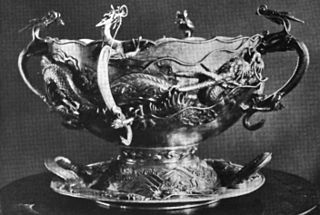 W
WThe Liscum Bowl is a sterling silver punch bowl set made in 1902 from bullion retrieved during the Boxer Rebellion by the U.S. Army. The silver was presented to the 9th Infantry Regiment by order of Chinese statesman Li Hung Chang in gratitude for the Americans' assistance to the Qing dynasty. The bowl was dedicated to Colonel Emerson H. Liscum, the regiment's commander killed at the Battle of Tientsin on 13 July 1900.
 W
WThe Memorial Hall of the Boxer Uprising (天津义和团纪念馆) in Tianjin is the only museum dedicated to the Boxer Rebellion in China. Also known as the Tianjin Boxer Rebellion Memorial, Luzutang Museum, or simply the Boxer Museum, it is located No.18 Hejia Lane, Ruyi'an Street, Hongqiao District, in Tianjin.
The Military Order of the Dragon was an exclusive fraternal order founded in 1900 by members of the China Relief Expedition, a U.S. military force that participated in the Boxer Rebellion in Imperial China.
 W
WThe Mutual Defense Pact of the Southeastern Provinces was an agreement made in the summer of 1900 during the Boxer Rebellion by governors of the provinces in southern, eastern and central China when the Eight Power Expedition invaded North China. The governors, including Li Hongzhang, Xu Yingkui, Liu Kunyi, Zhang Zhidong and Yuan Shikai, refused to carry out the imperial decree promulgated by the Qing dynasty to declare war on 11 foreign nations, with the aim of preserving peace in their own provinces.
 W
WSai Jinhua was a Chinese courtesan who became the acquaintance of Alfred von Waldersee. Her real family name was Cao. Sometimes she said her family name was Zhao. During her career as a courtesan she used the names Fu Caiyun, Sai Jinhua, and Cao Menglan. Her art name (hao) was Weizhao Lingfei. Some people referred to her as Sai Erye.
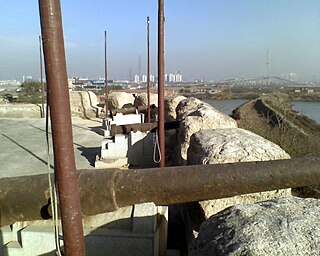 W
WThe Taku Forts or Dagu Forts, also called the Peiho Forts are forts located by the Hai River estuary in the Binhai New Area, Tianjin, in northeastern China. They are located 60 km (37 mi) southeast of the Tianjin urban center.
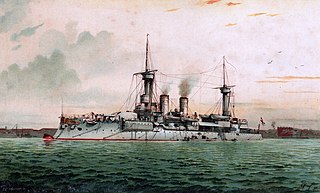 W
WSMS Weissenburg was one of the first ocean-going battleships of the Imperial German Navy. She was the third pre-dreadnought of the Brandenburg class, which also included her sister ships Brandenburg, Wörth, and Kurfürst Friedrich Wilhelm. Weissenburg was laid down in 1890 in the AG Vulcan dockyard in Stettin, launched in 1891, and completed in 1894. The Brandenburg-class battleships were unique for their era in that they carried six large-caliber guns in three twin turrets, as opposed to four guns in two turrets, as was the standard in other navies.
 W
WThe Boxers, also known by various other names in both Chinese and English, was a Chinese secret society known for having triggered the Boxer Rebellion from 1899 to 1901. It became a massive movement, counting anywhere between 50,000 and 100,000 members. Though the group originally supported the downfall of the Qing leadership of China for being "westernized", the group would later support the ruling Empress Dowager to try and eliminate groups the Boxers opposed, in particular the foreign Christian missionaries and Chinese converts, who they viewed to be detrimental to their efforts. The group was all but destroyed by the end of the Boxer Rebellion, with most of its leadership and structure eliminated, though some of its former members continued their actions in various other groups across China.
 W
WYuxian (1842–1901) was a Manchu high official of the Qing dynasty who played an important role in the violent anti-foreign and anti-Christian Boxer Rebellion, which unfolded in northern China from the fall of 1899 to 1901. He was a local official who rose quickly from prefect of Caozhou to judicial commissioner and eventually governor of Shandong province. Dismissed from that post because of foreign pressure, he was soon named governor of Shanxi province. At the height of the Boxer crisis, as Allied armies invaded China in July 1900, he invited a group of 45 Christians and American missionaries to the provincial capital, Taiyuan, saying he would protect them from the Boxers. Instead, they were all killed. Foreigners, blaming Yuxian for what they called the Taiyuan Massacre, labeled him the "Butcher of Shan-hsi [Shanxi]".